MARKETING
21 Examples of Successful Co-Branding Partnerships (And Why They’re So Effective)

Everyone has loyalties to their favorite brands, but there’s a good chance your favorite products result from two separate brands working together.
One of my own beloved childhood memories was a product of co-branding: Betty Crocker partnered with Hershey’s to include chocolate syrup in its signature brownie recipe.
There’s something brilliant about that co-branded product: It’s a fun way to marry two classic brands into one delicious experience for fans of baking and chocolate alike. In fact, these brands still create new co-branded products to this day.
What is co-branding?
Co-branding is a strategic marketing and advertising partnership between two brands wherein the success of one brand brings success to its partner brand, too.
Co-branding can be an effective way to build business, boost awareness, and break into new markets, and for a partnership to truly work, it has to be a win-win for all players in the game. Both audiences need to find value — like chocolate-loving fans of Betty Crocker and Hershey’s.
There are a ton of great examples of co-branding partnerships out there. To show you what makes them so successful, we’ve curated a list of examples of great co-branding partnerships to inspire you.
Featured Resource: Free Co-Marketing Templates

Looking to ramp up your co-branding program? Download HubSpot’s Co-Marketing Kit + Templates to learn more about co-branding best practices and build out your process with universal, customizable templates.
Co-Branding Partnership Business Examples
- GoPro & Red Bull
- Rachel Comey, Victor Glemaud, Sandy Liang, Nili Lotan & Target
- Joybird & Sherwin-Williams
- Casper & West Elm
- Kanye & Adidas
- BMW & Louis Vuitton
- Starbucks & Spotify
- Apple & Mastercard
- Airbnb & Flipboard
- Uber & Spotify
- Levi’s & Pinterest
- BuzzFeed & Best Friends Animal Society
- CoverGirl & Lucasfilm
- Amazon & American Express
- UNICEF & Target
- Nike & Apple
- Bonne Belle & Dr. Pepper
- Burger King & McDonald’s
- Warby Parker & Arby’s
- Taco Bell & Doritos
- Tim and Eric & Purple
1. GoPro & Red Bull
Co-Branding Campaign: Stratos
GoPro doesn’t just sell portable cameras, and Red Bull doesn’t just sell energy drinks. Instead, both have established themselves as lifestyle brands — in particular, a lifestyle that’s action-packed, adventurous, fearless, and usually pretty extreme. These shared values make them a perfect pairing for co-branding campaigns, especially those surrounding action sports.
To make the partnership work, GoPro equips athletes and adventurers from around the world with the tools and funding to capture things like races, stunts, and action sport events on video — from the athlete’s perspective. At the same time, Red Bull uses its experience and reputation to run and sponsor these events.
“GoPro camera technology is allowing us to complement the programming by delivering new athlete perspectives that have never been seen before,” said Sean Eggert, Red Bull’s director of sports marketing. The collaboration allows exclusive GoPro content to enhance both companies’ growth.
Why the Stratos Co-Branding Campaign Works
While GoPro and Red Bull have collaborated on many events and projects together, perhaps the biggest collaboration stunt they’ve done was “Stratos,” in which Felix Baumgartner jumped from a space pod more than 24 miles above Earth’s surface with a GoPro strapped to his person. Not only did Baumgartner set three world records that day, but he also embodied the value of reimagining human potential that define both GoPro and Red Bull.
2. Rachel Comey, Victor Glemaud, Sandy Liang, Nili Lotan & Target
Co-branding Campaign: High-End Fashion
Anyone who’s designer-conscious knows high fashion and Target aren’t exactly the same caliber regarding quality. Dresses by designers like Sandy Liang go for around $600, whereas dresses sold by Target go for more like $35 a pair. See what I mean?
But that discrepancy in pricing is exactly why these designers and Target brand decided to partner with one another. To support its brand positioning as trendy and fashionable, Target has paired with high-end fashion designers Rachel Comey, Victor Glemaud, Sandy Liang, and Nili Lotan to offer exclusive branded items for a limited time.

Why Target Co-Branding Campaign Works
In this exchange, the high-end designers can expose their name to a new generation of potential consumers, who will increasingly aspire to own more pieces from those high-end collections while furthering the idea that Target can be a store to find fashion-forward clothing.
3. Joybird & Sherwin-Williams
Co-branding Campaign: Being Boldly Original
The Joybird home lifestyle brand and paint company Sherwin-Williams did a co-branding campaign when they partnered together to curate an eclectic collection of home furnishings and color palettes.
Together, the two brands created an exclusive product line of paints and room design inspiration that helped customers easily select paint colors to complement their furniture choices.

Why the Sherwin-Williams Co-branding Campaign Works
These two businesses saw the opportunity to run a campaign that exposed their product and copywriting to brand new audiences. This intersection of target demographics could have brought in new business for each other and could have paved the way for future co-branding collaborations if proven mutually beneficial.
4. Casper & West Elm
Co-branding Campaign: Test a Casper Mattress
You may have already heard of Casper — an online mattress and bedding brand selling mattresses in a box.
Enter West Elm, a high-end furniture company. Casper and West Elm partnered so shoppers could try out the comfy mattress before purchasing — and so West Elm could advertise its chic bedroom furniture.

Why the West Elm Co-branding Campaign Works
This is another example of a mutually beneficial co-branding partnership. It helps both brands appeal to a broader group of shoppers — after all, Casper doesn’t sell furniture, and West Elm doesn’t sell mattresses. It also provides shoppers with options — to try a mattress before buying or to feel what it would be like sleeping in a bed frame.
5. Kanye & Adidas
Co-branding Campaign: Yeezy
Kanye West, best known for his Grammy-winning rap albums, partnered with Adidas to develop a high-end footwear line called Yeezy. The combination of Kanye’s personal brand and Adidas’ growing streetwear segment has made for robust company earnings and brand growth since it was introduced.

Why the West Elm Co-branding Campaign Works
Kanye’s celebrity appeal benefits Adidas by creating buzz around its apparel, and the athletic-wear brand gives Kanye a well-established platform to build his high-end clothing line. One of the strongest draws of Yeezy — and most notably its shoes — is its exclusivity: Kanye’s celebrity status, extremely scarce roll-outs, and the high price tag make the lucky few to own Yeezy sneakers feel a little famous by association.
Adidas’ co-branding relationship with Kanye and the resulting cult-like Yeezy following led to a stellar year for the company: in 2019, Adidas’ net income climbed 19.5% to $1.9 billion.
6. BMW & Louis Vuitton
Co-branding Campaign: The Art of Travel
Car manufacturer BMW and designer Louis Vuitton may not be the most obvious pairings. But if you think about it, they have a few important things in common. If you focus on Louis Vuitton’s signature luggage lines, they’re both in the business of travel. They both value luxury. And finally, they’re both well-known, traditional brands that are known for high-quality craftsmanship.

These shared values are exactly why this co-branding campaign makes so much sense. In their partnership, BMW created a sports car model called the BMW i8, while Louis Vuitton designed an exclusive, four-piece set of suitcases and bags that fit perfectly into the car’s rear parcel shelf.
Although the four-piece luggage set goes for a whopping $20,000, the price is right for the target customer, as the BMW i8 starts at $135,700. A price like that kind of makes that luggage set seem like a drop in the bucket.
Not only does the luggage fit perfectly size-wise, but its design and appearance fit perfectly with BMW’s image: sleek, masculine, and high-quality. Turns out both the luggage and some parts of the car’s interior use carbon fiber, strong-yet-light composite material.
Why the Louis Vuitton Co-branding Campaign Works
Both brands knew their target market desired luxury and meticulous craftsmanship. By selling complimentary high-quality products, the brands successfully garnered attention from respective loyal customers.
7. Starbucks & Spotify
Co-branding Campaign: First-of-Its-Kind Music Ecosystem
Starbucks scaled up a premium coffee shop experience into a massive global brand, using music to create an ambiance around its coffee. Spotify, a music streaming platform, has powered almost 25 billion hours of listening worldwide. Starbucks and Spotify forged an innovative co-branding partnership to build a “music ecosystem”, offering artists greater access to Starbucks consumers and giving Starbuck access to Spotify’s expansive discography.

Why the Spotify Co-branding Campaign Works
Through the initiative, Starbucks employees get a Spotify premium subscription, with which they can curate playlists (that patrons can access through the Starbucks Mobile App) to play throughout the day in the shop. This music ecosystem is designed to expand the coffeehouse environment that Starbucks is known for while giving artists greater exposure to Starbucks customers.
The “musical-ecosystem” partnership is mutually beneficial, allowing the companies to reach the other’s audience without sacrificing their brand.
8. Apple & MasterCard
Co-branding Campaign: Apple Pay
Sometimes, co-branding partnerships aren’t just cool projects between two companies — they actually have practical value when the companies work together.

When Apple released the Apple Pay app, the brand effectively changed how people perform transactions. This app allows people to store their credit or debit card data on their phone, so they can use them without physically having the card with them. But for this app to succeed, it needs credit card companies to integrate with this technology. By the same token, credit card companies also face more competition themselves if they aren’t compatible with the latest consumer purchasing tool.
Why the Mastercard Co-branding Campaign Works
To get out ahead of its competition, MasterCard became the first credit card company to allow its users to store their credit and debit cards on Apple Pay. MasterCard not only showed support of a major consumer tech developer in this partnership — it evolved along with its own customers in how they choose to make purchases at the counter.
9. Airbnb & Flipboard
Co-branding Campaign: Experiences
You’ve probably heard of Airbnb, the room-sharing application that allows you to find convenient lodging hosted by real people. But its newest partner, Flipboard, might not have been on your radar until now.
Flipboard is a news aggregator that collects news and topical content that users are sharing on social media, and allows you to “flip” through the material much like a social media feed. Well, Airbnb recently teamed up with Flipboard to create Experiences, which serve Airbnb users with lifestyle content tailored to their interests and shared by people with similar interests as the reader.

Why the Flipboard Co-branding Campaign Works
The ongoing campaign recently led to another co-created product called Trips, which allows Airbnb users to connect with hosts with common interests and actually book these experiences when traveling. This partnership is an impressive example of how businesses can connect their customers with information that caters to their individual interests and drive product usage as a result.
10. Uber & Spotify
Co-branding Campaign: Soundtrack for Your Ride
Music-streaming app Spotify partnered with ride-hailing app Uber to create “a soundtrack for your ride.” This is a great example of a co-branding partnership between two very different products with similar goals— to earn more users.

When riders are waiting for an Uber ride, they’re prompted to connect with Spotify and become the DJ of their trip. Users can choose from their own playlists to determine what they’ll listen to.
Why the Spotify Co-branding Campaign Works
This smart co-branding partnership helps fans of Uber and Spotify alike enjoy better experiences thanks to the app. And they might be more interested in picking Uber and Spotify over competitors knowing they can enjoy their next ride listening to their favorite tunes.
11. Levi’s & Pinterest
Co-branding Campaign: Styled by Levi’s
Levi Strauss & Co. — one of the world’s oldest and most recognized jean brands — recently joined forces with Pinterest, a social platform where users pin posts they like to their user profiles.

People often turn to Pinterest for fashion inspiration, making a co-branding partnership with Levi’s a natural partnership. Styled by Levi’s is a new initiative between Pinterest and Levi’s offers a “personalized styling experience,” or style insights tailored to each user’s tastes and preferences.
Why the Pinterest Co-branding Campaign Works
The partnership offers an authentic and individualized brand relationship, which is difficult to come by in an increasingly digital environment. Pinterest offers Levi’s a leading social platform with millions of users interested in visual offerings, and Levi’s meets these needs with digital personalization and visual-focused boards.
12. BuzzFeed & Best Friends Animal Society
Co-branding Campaign: Emma Watson + Kittens
Some co-branding campaigns are more complicated than others. This example from BuzzFeed and Best Friends Animal Society is one of the simplest ones—and it shows that a great co-branding effort doesn’t have to take months of planning or millions of dollars.
For this campaign, Best Friends Animal Society wanted to leverage BuzzFeed’s readership of over 200 million people.
To do this, they partnered with the folks at BuzzFeed to set up and publish an article called, “We Interviewed Emma Watson While She Played With Kittens And It Was Absolutely Adorable,” which you can read here.
The article is exactly what it sounds like: Harry Potter and Beauty and the Beast star Emma Watson answered fans’ questions while she played with cute kittens.

Why the Best Friends Animal Society Co-branding Campaign Works
The article ends with a CTA advertising that the kittens featured in the video are, in fact, adoptable — a win-win for both partners by using celebrity to garner attention for clicks while providing more exposure for animals in need of new homes and donations.
13. CoverGirl & Lucasfilm
Co-branding Campaign: Light Side and Dark Side Makeup
Whenever a new installment of the beloved “Star Wars” series is released in theaters, it causes global pandemonium. The release of “Star Wars: Episode VII The Force Awakens” in 2015 was no exception. The series’ parent company, Lucasfilm, partnered with CoverGirl to capture a broader audience to get new and old fans excited about the movie’s release.

You might be wondering, “What do “Star Wars” and makeup have in common?” And the cleverness of this partnership is evident in the answer.
In the past, space-age action movies were almost exclusively advertised and targeted toward men and boys. But in this day and age, that’s nonsense — because people of all genders can be interested in space exploration and makeup contouring alike.
The line was designed by famed makeup artist Pat McGrath, and it features two styles: the Light Side and the Dark Side, which loyal “Star Wars” fans will recognize as the sides of good and evil in the movies.
Why the Lucasfilm Co-branding Campaign Works
This co-branding partnership was a win for both brands. Lucasfilm captured more attention and got CoverGirl shoppers (many of whom are young women) excited about the film’s release. And CoverGirl hopped on the “Star Wars” advertising bandwagon that took over the internet, stores, and TV leading up to the film’s release.
14. Amazon & American Express
Co-branding Campaign: Amazon Business American Express Card
Ecommerce giant Amazon is a global enterprise with millions of users and almost two million businesses that sell on their platform. Amazon is looking to improve the way small businesses sell on their platform, so they’ve partnered with American Express on a co-branded credit card.

Why the American Express Co-branding Campaign Works
The card helped users buy goods and services and provide enhanced data insights on their purchasing activity. American Express and Amazon share a commitment to help small businesses grow in the U.S. and by combining their efforts, the two companies had the opportunity to enhance their performance while building brand trust.
15. UNICEF & Target
Co-branding Campaign: Kid Power
If you have the chance to partner for a not-for-profit cause, it can pay off in multiple ways.
Target partnered with UNICEF on a campaign called Kid Power, which committed Target to one of UNICEF’s sustainable development goals (SDGs). The retailer sold kid-friendly fitness trackers encouraging the wearer to complete various fitness activities, which ultimately helped deliver food packets to underprivileged children worldwide.

Why the Target Co-branding Campaign Works
By selling this fun, inexpensive fitness product, Target encourages children to embrace a healthy lifestyle and uses kids’ successes to supply underserved communities with the necessary resources. It’s an ongoing partnership that generates awareness of global malnutrition, helps UNICEF meet its demanding SDGs, and opens up Target to a demographic of families they might otherwise have had access to.
16. Nike & Apple
Co-branding Campaign: Nike+
Athletic brand Nike and technology giant Apple have been working together since the early 2000s, when the first line of iPods was released.
The co-branding partnership started as a way to bring music from Apple to Nike customers’ workouts using the power of technology: Nike+iPod created fitness trackers, sneakers, and clothing that tracked activity while connecting people to their tunes.

The partnership has since evolved to become Nike+ — which uses activity tracking technology built into athletic clothing and gear to sync with Apple iPhone apps to track and record workout data. Tracking transmitters can be built into shoes, armbands, and even basketballs to measure time, distance, heart rate, and calories burned.
Why the Apple Co-branding Campaign Works
It’s a genius co-branding move that helps both parties provide a better experience to customers — and with the popularity of fitness tracking technology, Nike+ is ahead of the curve by making it easy for athletes to track while they play.
17. Bonne Belle & Dr. Pepper
Co-branding Campaign: Flavored Lip Balm
Dr. Pepper-flavored lip balm. I mean, it’s genius.

Bonne Belle first debuted Lip Smacker, the world’s first flavored lip balm, in 1973, starting with flavors like strawberry, lemon, and green apple. Just two years later in 1975, the brand forged its first flavor partnership with the timeless Dr. Pepper brand. The result? A lip balm flavor that’s been famous for decades among teenage girls.
If you think the connection between lip balm and Dr. Pepper is a little thin, consider the copy on one of their vintage ads: “It’s the super shiny lip gloss with lip-smacking flavor… just like the world’s most original soft drink.” And later, “From Bonne Belle of course: the cosmetics company that understands your taste.”
Why the Dr. Pepper Co-branding Campaign Works
While you don’t think of flavor and cosmetics, this campaign works because overlapping target demographic consumers can get excited to try an affordable and fun product like Dr. Pepper lip gloss with ease.
Most Surprising Brand Partnerships
Every so often, we hear about a brand partnership that we think doesn’t make any sense — but it leads to a few incredibly memorable, unexpected campaigns. If you want to broaden your horizons of who you should partner with, check out these surprising co-marketing successes.
18. Burger King & McDonald’s
Co-branding Campaign: A Day Without a Whopper
Yes. You read that right: Burger King and McDonald’s — two of the fiercest fast—food industry opponents— joined together for a co-marketing campaign in 2019. And, while we don’t encourage competing brands to do this — the campaign was for an amazing cause.
At the time, McDonald’s was donating $2 to childhood cancer charities for every Big Mac purchased. So, Burger King worked with the competing fast-food chain to host “A Day Without a Whopper.”
For one day, Burger Kings across Argentina and other countries took the Whopper off their menu in an effort to encourage people to buy a Big Mac from McDonald’s instead.

Why the McDonald’s Co-branding Campaign Works
Although there were some criticisms of the campaign, because it confused Burger King customers, it was an amazing example of two competing brands that worked together to help a charity. Because of how they partnered up for a good cause, audiences loved the campaign and buzzed about it all over the web.
19. Warby Parker & Arby’s
Co-branding Campaign: The WArby Collection
Warby Parker is known for selling affordable glasses at stores across the U.S. and through nearly fully virtual fitting platforms. Arby’s is a restaurant chain known for its slogan, “We have the meat!”
Looking at the two companies, there’s not much that they have in common. But, this didn’t stop them from creating a co-branded April Fools Day campaign in 2018.
For the campaign, the two brands played up the one major thing they had in common — the fact that the word “Arby” was part of both their names.
On April Fool’s Day, Warby Parker visitors could buy Arby’s themed fashion items, which were part of the cleverly-named WArby Collection.
According to Nylon, items visitors could buy included a WArby’s T-shirt, baseball cap, and tote bag (which also said, “Nice To Meat You” on it). They could also buy a pack of sandwich-themed microfiber cloths and glasses with a raw beef pattern.

Meanwhile, Arby’s offered food with boxes that had the WArby’s logo on it as well as onion rings with a box that read “Onion Ring Monocle.”

Why the Arby’s Co-branding Campaign Works
This campaign shows that you don’t necessarily need a matching audience demographic or a partner in a similar industry to create a campaign that catches a large audience’s attention. Sometimes all you need is a sense of humor and creativity.
20. Taco Bell & Doritos
Co-branding Campaign: Doritos Locos Tacos
When the Doritos Locos Taco was first introduced, it quickly became one of the fast food industry’s most popular and widely recognized items. Frito-Lay took Taco Bell’s crunchy taco recipe and gave the Locos Taco its special, signature twist: a Doritos shell. The two companies wanted to keep the shell as close to the original cheesy chips as possible, using the original corn masa recipe and coating it in that distinctive nacho cheese dust.

The taco was an immediate and explosive success: Taco Bell sold an estimated 1 billion units the first year it was introduced.
Why the Doritos Co-branding Campaign Works
Taco Bell and Frito Lay advertised the Doritos Locos Taco by wrapping the taco in a classic Doritos bag, reflecting the co-branding partnership and appealing to both brands’ audiences. The Doritos Locos Taco’s extraordinary success is yet another example of why co-branding can boost reach and sales for both brands.
21. Tim and Eric & Purple
Co-branding Campaign: Purple Boys
Tim and Eric (a.k.a. Tim Heidecker and Eric Wareheim) are the comedic duo behind Adult Swim shows like Tim and Eric Awesome Show, Great Job!, Check It Out! with Dr. Steve Brule, Tim & Eric’s Bedtime Stories, and Beef House.
Meanwhile, Purple, the company and HubSpot customer known for the popular Purple Mattress, often launches unique advertising campaigns which have caught the eye of millennial and Gen-Z demographics.
It makes sense for a company to team up with celebrities who can promote their product, Tim and Eric’s comedic style is incredibly random and unique. Although they’re pretty hilarious, as a marketer, you might wonder how this type of comedy style translates into a mattress marketing campaign that actually generates revenue.
While you might think Tim and Eric had dull down their iconic routine to sell Purple products, this is actually quite far from the truth. In a video series called The Purple Boys, they actually amped up their bizarre antics.
The storyline of Purple Boys episodes often relate to a sleep-related pain point, such as the “Sunday Scaries.” Although the script and special effects are incredibly random, the episodes almost always end with the Purple Boys supplying a sleep-deprived character with a Purple mattress.
To give you a visual of what this off-the-wall comedy series looks like, check out this episode that centers around a sleepy character named Joe Dunder:
Why the Purple Co-branding Campaign Works
Although hiring actors is technically more of a sponsorship than a partnership, this large-scale campaign benefits both parties. While Tim and Eric could spread awareness of their comedy to Purple audiences, Tim and Eric fans might watch these videos for entertainment and learn about Purple’s products along the way.
Creating a Great Co-Marketing Campaign
Although you might not have the budget of the brands noted above, you can take note of them regarding their creativity, level of storytelling, and how they pooled their resources to connect their separate brands in a mutually beneficial way.
As you search for the best co-marketing partner for your brand and build a winning campaign, we hope you find some inspiration for your next stellar launch.
Editor’s Note: This article was originally published in September 2020 and has been updated for comprehensiveness.
MARKETING
A Recap of Everything Marketers & Advertisers Need to Know
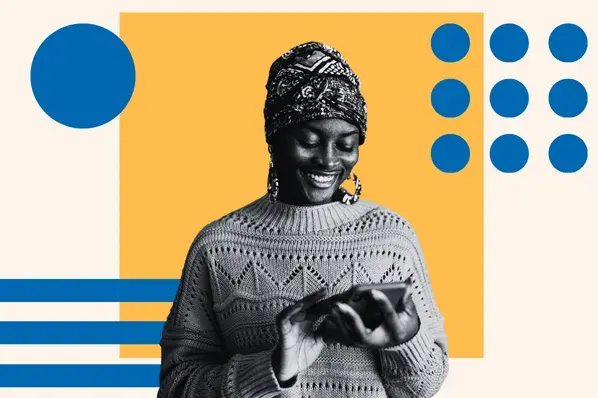
When rumors started swirling about Twitter changing its name to X, I couldn’t believe it at first. But then, in July 2023, as I searched for my favorite blue icon on the phone, I found a black icon instead. It had actually happened!
MARKETING
The key to correcting the C-suite trust deficit

Take a moment to search “CMO tenure” and you’ll find a wide variety of content discussing the short tenure of CMOs and how it’s among the shortest of roles in the C-suite. If you dive deeper, you’ll find that CEOs don’t seem to trust CMOs.
Boathouse’s CMO Insights study (registration required) noted several sobering conclusions:
- 34% of CEOs have great confidence in their CMOs.
- 32% of CEOs trust their CMOs.
- 56% of CEOs believe their CMO supports their long-term vision.
- And only 10% of CEOs believe their CMO puts the CEO’s needs before their own.
If these statistics also apply to the CMO’s entire organization, then it’s clear we have a trust problem with marketing leadership.
If you haven’t read Patrick Lencioni’s “The Five Dysfunctions of a Team,” I consider it required reading for anyone in any leadership role. In his book, Lencioni builds a pyramid of dysfunctions that need to be addressed for a team to succeed. The foundational dysfunction — with which one cannot build a successful team — is “absence of trust.” We see it at scale with marketing organizations today.
Introducing objectivity through data
In “Hamlet,” Shakespeare writes, “There is nothing either good or bad, but thinking makes it so.” Each organization that makes up a company looks at the company from a different perspective. What marketing sees as positive, finance may see as negative. But who’s right? No one.
Usually, there is no objectivity because leadership comes up with an idea and we execute it. It’s like the fashion proverb “Beauty is in the eye of the beholder.” Unfortunately, we’re going to struggle to run a profitable organization if it’s run like a fashion show.
Therefore, we need to introduce objectivity to how we work. Leadership needs to come together to agree on goals that align with the goals of the broader organization. One element of this conversation should be an acknowledgment that this is turning a ship.
Often leaders — especially those without marketing backgrounds — are likely to expect instant gratification. It’s going to take time to turn the ship and you and your team would do well to set reasonable expectations right away.
Dig deeper: KPIs that connect: 5 metrics for marketing, sales and product alignment
Aligning goals and metrics across the organization
With goals in hand, we need to assign metrics to their progress and agree on the source(s) of truth. Once these objective measures are in place, perspective doesn’t matter. 2 + 2 = 4 regardless of whether you’re in HR or accounting.
Every public road has a speed limit and whether you’re in compliance with it has nothing to do with your perspective. If you’re above it, you’re wrong and subject to penalties. Referring to the fashion example, it’s not a fashion show where some people like a dress and others don’t.
By using data to objectively measure marketing’s progress within the organization and having the rest of the leadership buy into the strategy, we build trust through objectivity. Maybe the CEO would not have chosen the campaign the marketing team chose.
But if it was agreed that a >1 ROAS is how we measure a successful campaign, it can’t be argued that the campaign was unsuccessful if the ROAS was >1. In this example, the campaign was an objective success even if the CEO’s subjective opinion was negative.
Data-driven campaign planning
Within the marketing organization, campaigns should always be developed with measurement top of mind. Through analysis, we can determine what channels, creative, audiences and tactics will be most successful for a given campaign.
Being able to tell the leadership team that campaigns are chosen based on their ability to deliver measured results across metrics aligned to cross-departmental goals is a powerful message. It further builds trust and confidence that marketing isn’t run based on the CMO’s subjective opinions or gut decisions. Rather, it’s a collaborative, data-driven process.
For this to be successful, though, it can’t just be for show, where we make a gut decision and direct an analyst to go find data to back up our approach. This would be analytics theater, which is a perversion of the data. Instead, tell the analyst what you think you want to do and ask them to assess it.
For the rest of the organization’s leadership, ask questions when the marketing team presents a campaign. Find out how they came up with the strategy and expect to hear a lot about data — especially the metrics you all agreed would support the company’s overarching goals.
Dig deeper: 5 failure points of a marketing measurement plan — and how to fix them
Data literacy: Building credibility through transparency
Building trust doesn’t happen overnight, but a sustained practice of using data to drive marketing leadership’s decisions will build trust if the metrics ladder up to the organizational goals and all of leadership is bought into the measurement plan.
Over time, this trust will translate into longer tenure and more successful teams through building the infrastructure needed to tackle Lencioni’s five dysfunctions.
Opinions expressed in this article are those of the guest author and not necessarily MarTech. Staff authors are listed here.
MARKETING
How Tagging Strategies Transform Marketing Campaigns
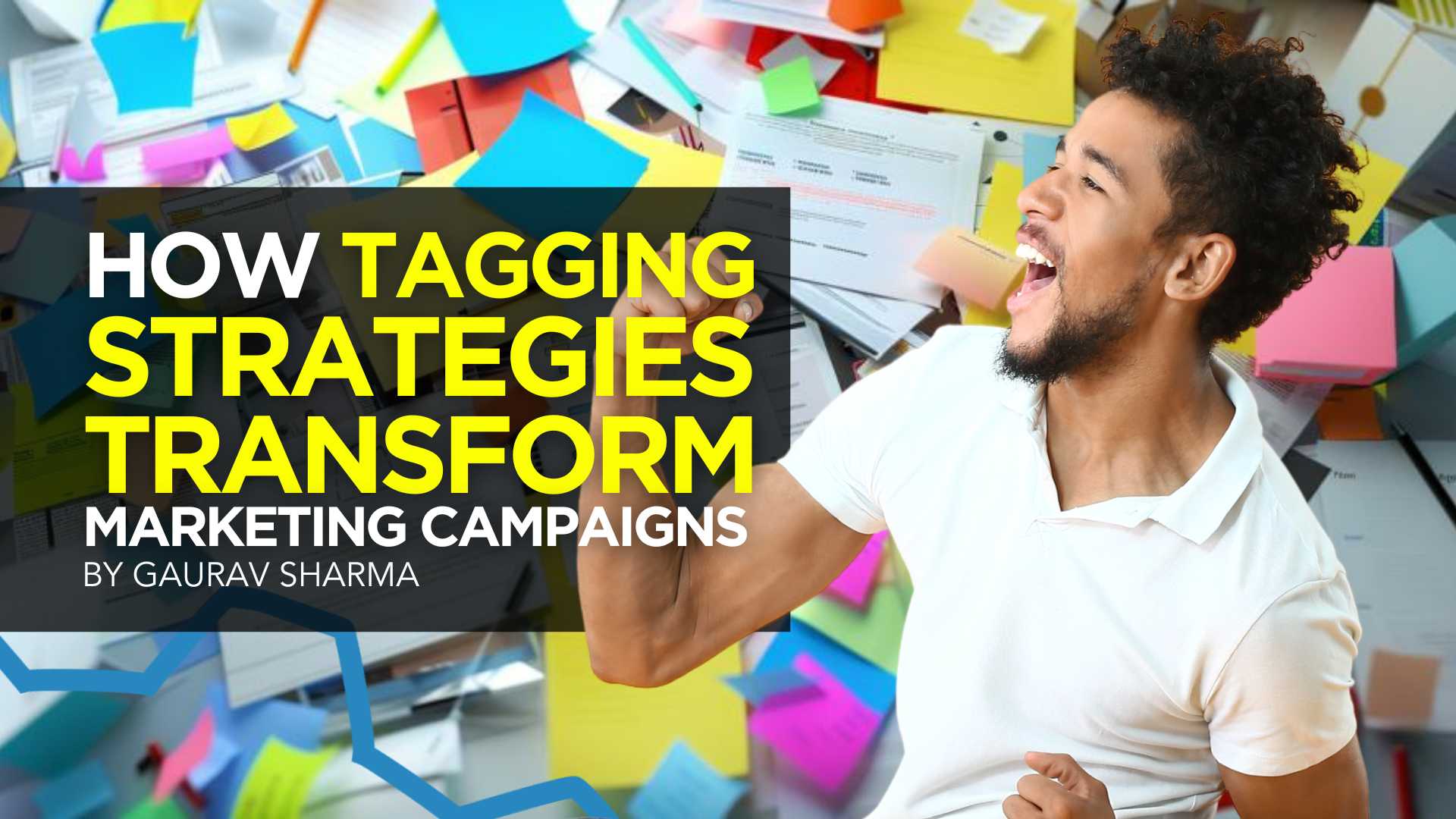

As a marketer, I understand how today’s marketing campaigns face fierce competition. With so much content and ads competing for eyeballs, creating campaigns that stand out is no easy task.
That’s where strategies like tagging come in.
It helps you categorize and optimize your marketing efforts. It also helps your campaigns cut through the noise and reach the right audience.
To help you out, I’ve compiled nine ways brands use a tagging strategy to create an impactful marketing campaign.
Let’s get to it.
How Brands Use a Tagging Strategy
Tagging involves using keywords or labels to categorize and organize content, products, or customer data. You attach tags to specific items or information to make searching, sorting, and analyzing data easier.
There are various types of tags, including meta tags, analytics tags, image tags, hashtags, blog tags, and more.
So, how do brands use a tagging strategy to make their marketing campaigns stand out?
Improve Social Media Engagement
With over 5 billion users, social media provides an easy way to connect with your audience, build relationships, and promote your offerings.
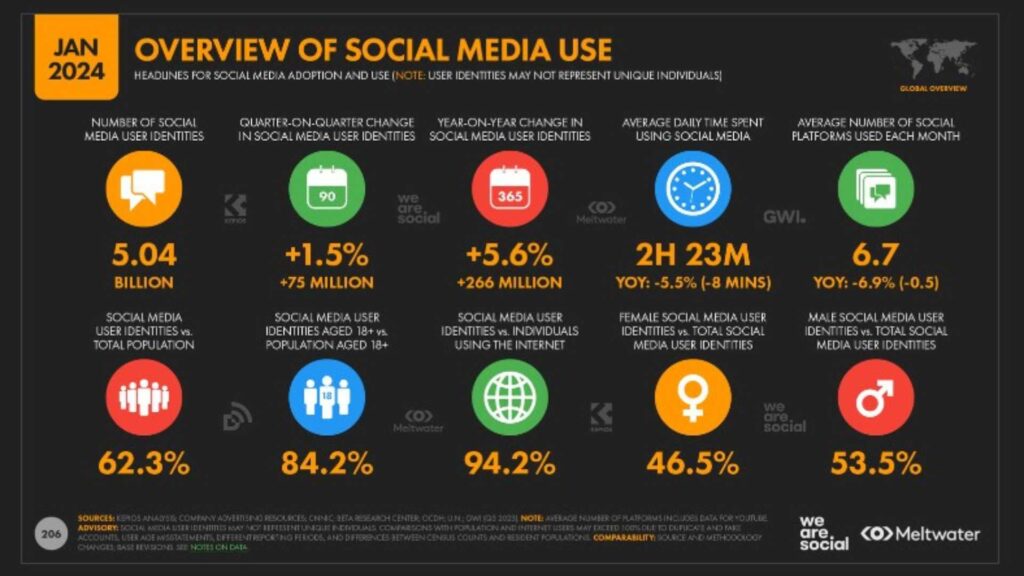

Use a tagging strategy to boost social media interactions. Consistently use hashtags that align with current trends and topics. This encourages people to interact with your content and boosts content visibility.
You can also use tags to monitor brand mentions of your products or your industry. This allows you to engage with your audience promptly.
Consider virtual social media assistants to streamline your tagging strategy. These AI-driven tools can suggest relevant hashtags, track mentions, and automate responses. Implementing them can save time and resources while ensuring consistent engagement across your socials.
Build a Personal Brand on LinkedIn
LinkedIn is the world’s largest professional networking platform, with over 1 billion members across 200 nations. It offers excellent opportunities for individuals and businesses to build and nurture their brands.
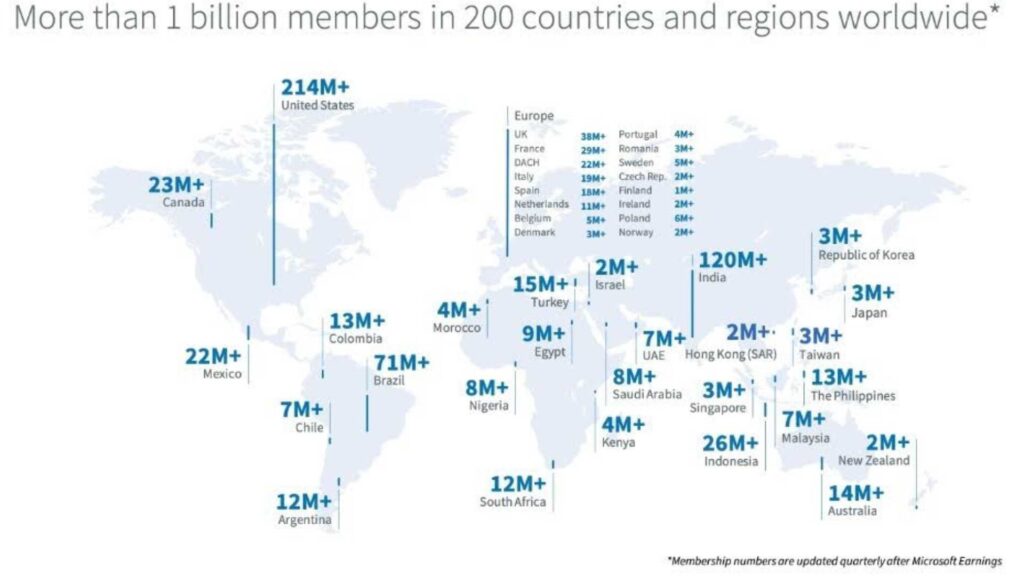

However, simply creating a professional profile isn’t enough to build a personal brand on LinkedIn.
Use various tags to increase your visibility, establish thought leadership, showcase expertise, and attract the right connections. For instance, use skill tags to showcase your expertise and industry tags to attract connections and opportunities within your industry. Use certification tags to help showcase your expertise and credibility to potential employers or clients.
Facilitate Customer Segmentation and Personalization
Personalization matters—more so in today’s data-driven world. In fact, 65% of consumers expect your brand to adapt to their changing preferences and needs.
To meet this expectation, consider using a tagging strategy.
Segment your customers based on shared characteristics, such as demographics, interests, purchase history, cart abandonment, and behavior.
Here’s a summary of the steps to customer segmentation.
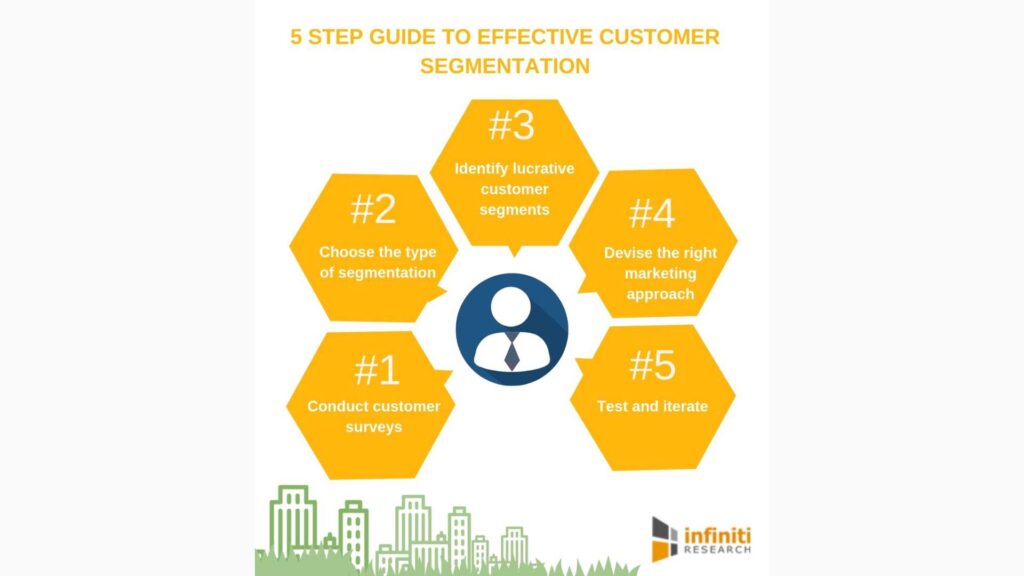

With your customer segments ready, use tags to tailor your marketing messages and offerings to specific segments. Imagine sending targeted email campaigns based on what your customers need. That’s the power of segmentation and tagging in action!
Enhance SEO and Content Discoverability
Tagging content can have a profound impact on search engine optimization (SEO) and content discoverability. When users search for specific topics or products, well-tagged content is more likely to appear in search results, driving organic traffic to your website.
Additionally, tags can help you analyze the most popular topics with your readers. Then, the results of this analysis can help you adjust your content strategies accordingly.
And get this— certain AI tools can help analyze your content and suggest relevant tags and keywords. Using these tools in addition to a tagging strategy can help optimize your SEO strategies and boost content discoverability.
Partner with the Right Influencers
Influencer marketing has become a go-to marketing approach for modern brands. Recent stats show that 85% of marketers and business owners believe influencer marketing is an effective marketing strategy.
But how do you find the perfect influencer for your campaign?
Utilize tags to identify influencers who are relevant to your niche. Beyond this, find influencers who align with your brand values and target audience.
Additionally, look for influencers who use hashtags that are relevant to your campaigns. For instance, fashion influencer Chiara Ferragni uses #adv (advertising) and #ghd (good hair day) hashtags in this campaign.
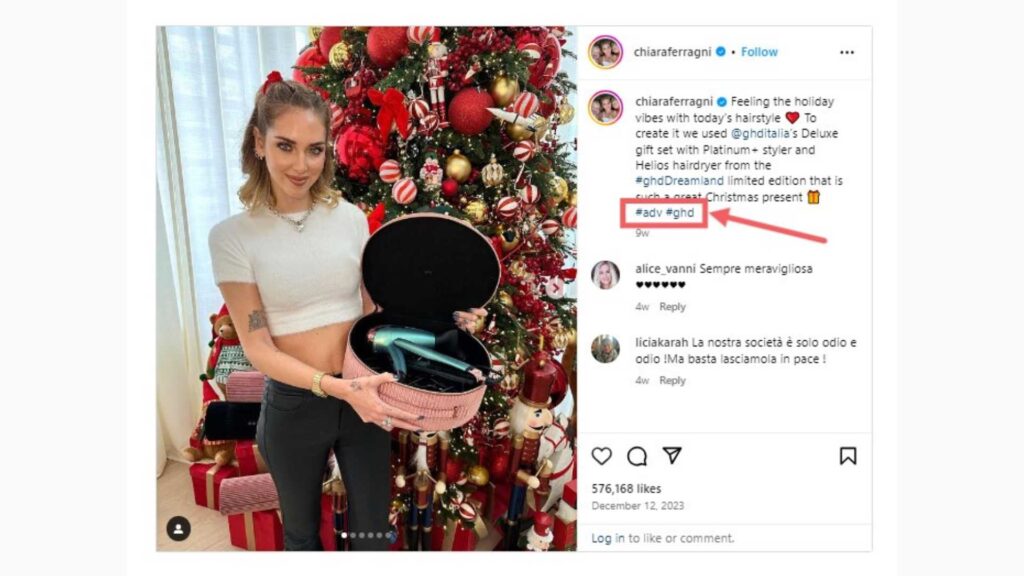

Monitor industry-specific hashtags and mentions to discover influential voices and build profitable relationships with them.
Track Hashtag Performance
Tracking your hashtag performance helps you understand your campaigns’ engagement, reach, and effectiveness.
To achieve this goal, assign special hashtags to each marketing project. This helps you see which hashtags generate the most engagement and reach, enabling you to refine your tagging strategy.
Here’s an example of a hashtag performance report for the #SuperBowl2024.
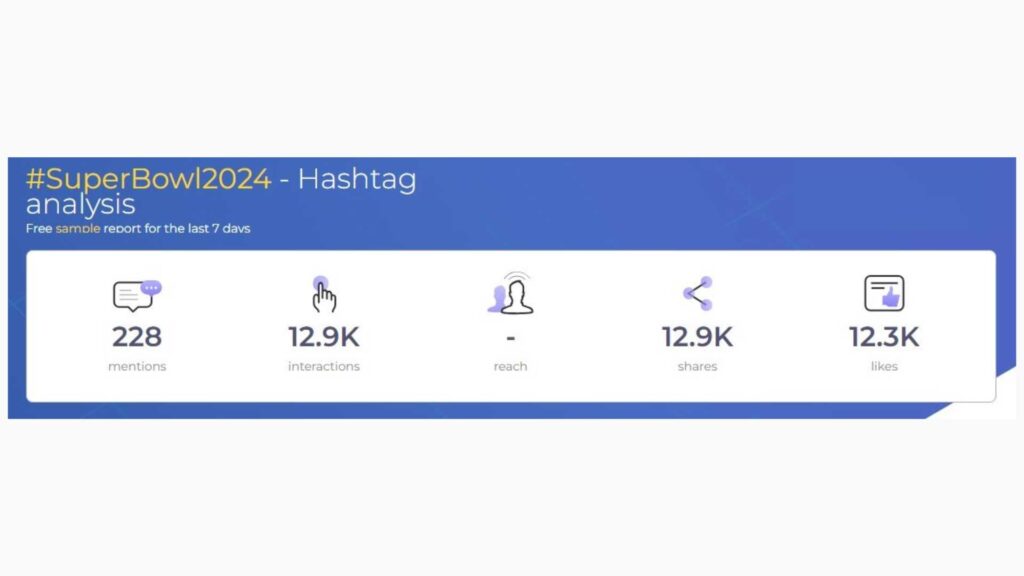

This curated list of hashtag generators by Attrock discusses the top tools for your consideration. You can analyze each and choose the one that best fits your needs.
Categorize Content Accordingly
The human attention span is shrinking. The last thing you want is for your audience to have difficulty in finding or navigating your content, get frustrated, and bounce.
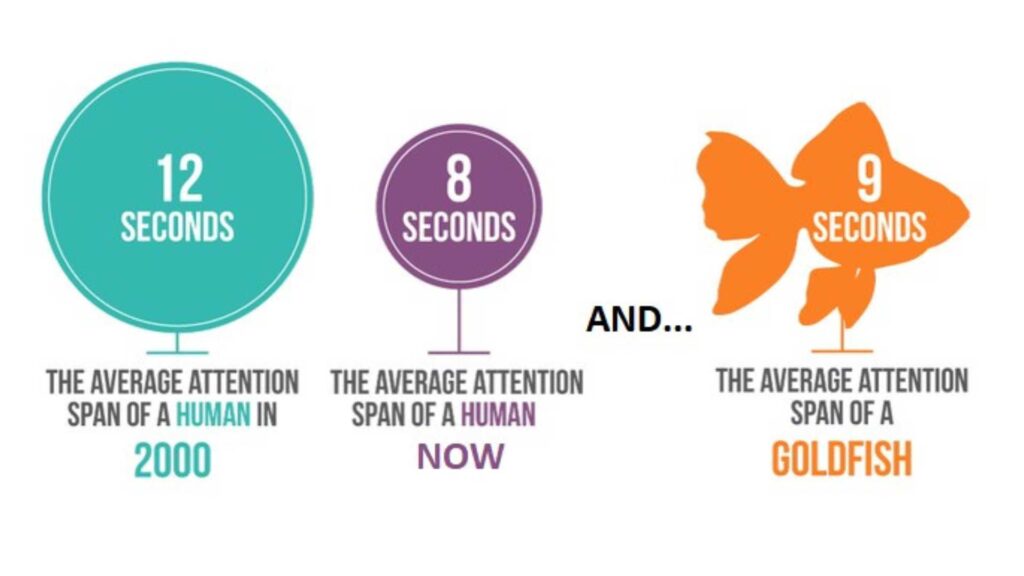

Untagged content can be difficult to navigate and manage. As any marketer knows, content is important in digital marketing campaigns.
To categorize your content, identify the main categories by topics, themes, campaigns, target audiences, or product lines. Then, assign relevant tags based on the categories you’ve identified. After that, implement a consistent tagging strategy for existing and new content.
Organizing your content using tags can also help streamline your content management workflow. Most importantly, readers can easily find the content they’re looking for, thereby boosting overall user experience, engagement, and conversions.
Boost Your Email Marketing Strategy
Email marketing remains a powerful marketing tool in today’s digital world. It’s also another area where brands use a tagging strategy to directly reach their target audience.
Use tags to segment your email list and personalize your marketing messages. Then, you can send targeted emails based on factors like purchase history, interests, and demographics.
Personalization can significantly improve open rates, CTRs, and overall engagement and conversion rates. It’s a simple yet impactful strategy to make your email marketing strategy more effective.
Plus, you can use tags to track how well your emails perform with each group. This helps you understand what content resonates best with your audience and provides insight on how to improve your emails going forward.
Enhance Analytics and Reporting
Every marketer appreciates the immense value of data. For brands using tagging strategies, tags are powerful tools for gathering valuable data.
Analyze how users interact with your tagged content. See which tags generate the most clicks, shares, conversions, and other forms of engagement. Gain insight into audience preferences and campaign effectiveness.
This granular data about your marketing efforts allow you to make data-driven decisions, allocate resources effectively, and refine your marketing strategies.
Final Thoughts
There isn’t a single correct way for brands to use a tagging strategy in marketing. You can use a tagging strategy however you see fit. However, the bottom line is that this strategy offers you a simple yet powerful way to create attention-grabbing and unique marketing campaigns.
Fortunately, tagging strategies are useful across various marketing initiatives, from social media and email marketing to SEO and more.
So, if you’re ready to elevate your marketing campaign, build a strong brand presence, and stand out among the competition, consider employing effective tagging strategies today.
-
SEARCHENGINES7 days ago
Daily Search Forum Recap: April 29, 2024
-
SEARCHENGINES6 days ago
Daily Search Forum Recap: April 30, 2024
-
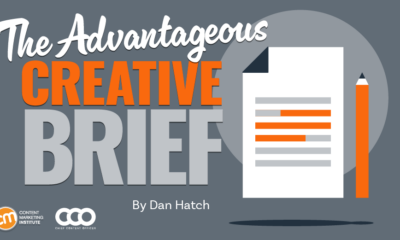
 MARKETING6 days ago
MARKETING6 days agoHow To Develop a Great Creative Brief and Get On-Target Content
-

 SEO7 days ago
SEO7 days agoGoogle’s John Mueller On Website Recovery After Core Updates
-
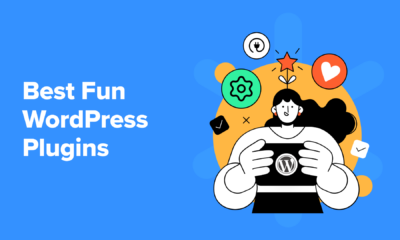
 WORDPRESS6 days ago
WORDPRESS6 days ago13 Best Fun WordPress Plugins You’re Missing Out On
-
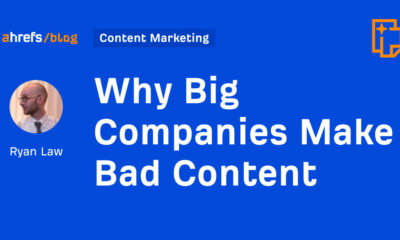
 SEO5 days ago
SEO5 days agoWhy Big Companies Make Bad Content
-
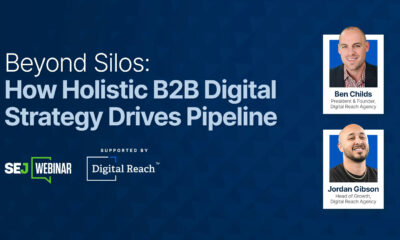
 SEO5 days ago
SEO5 days agoHow To Drive Pipeline With A Silo-Free Strategy
-

 SEO6 days ago
SEO6 days agoOpenAI To Show Content & Links In Response To Queries












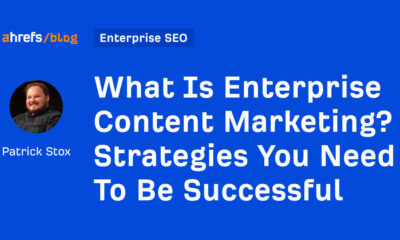

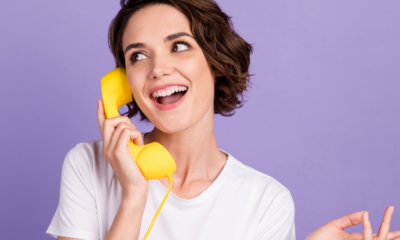




You must be logged in to post a comment Login